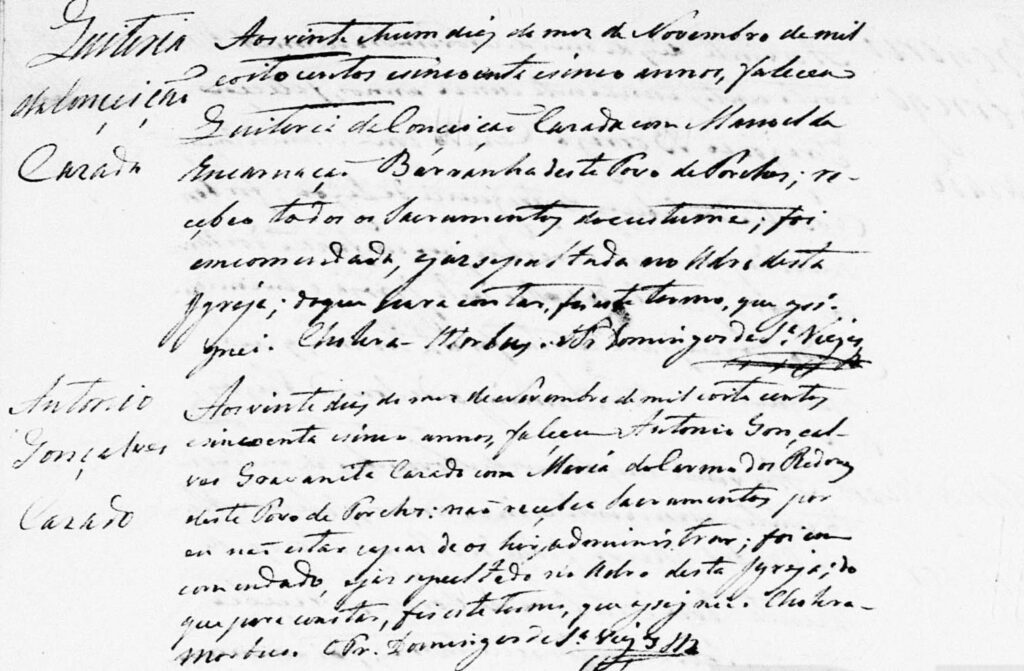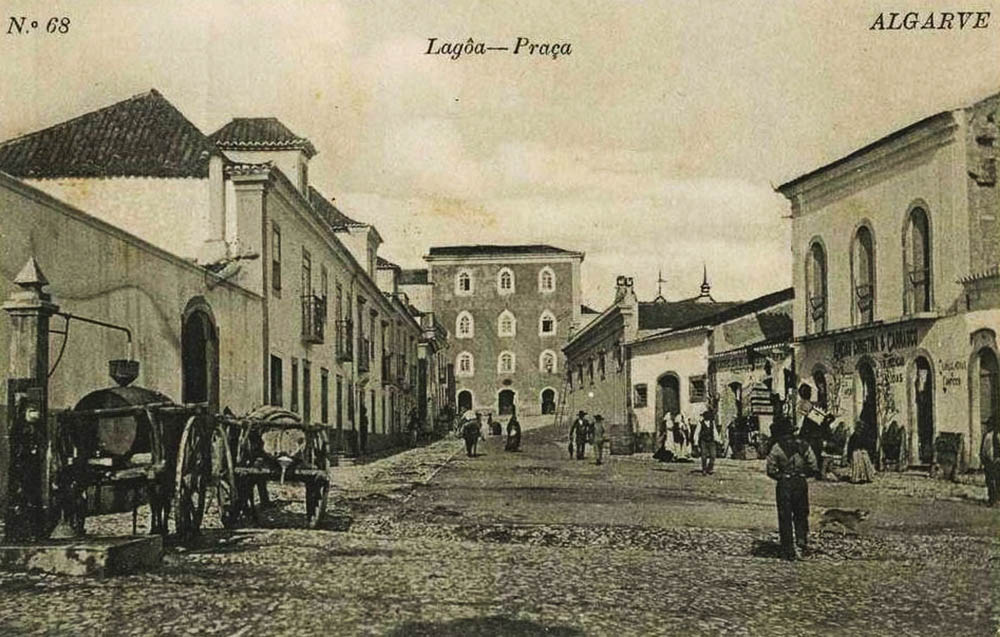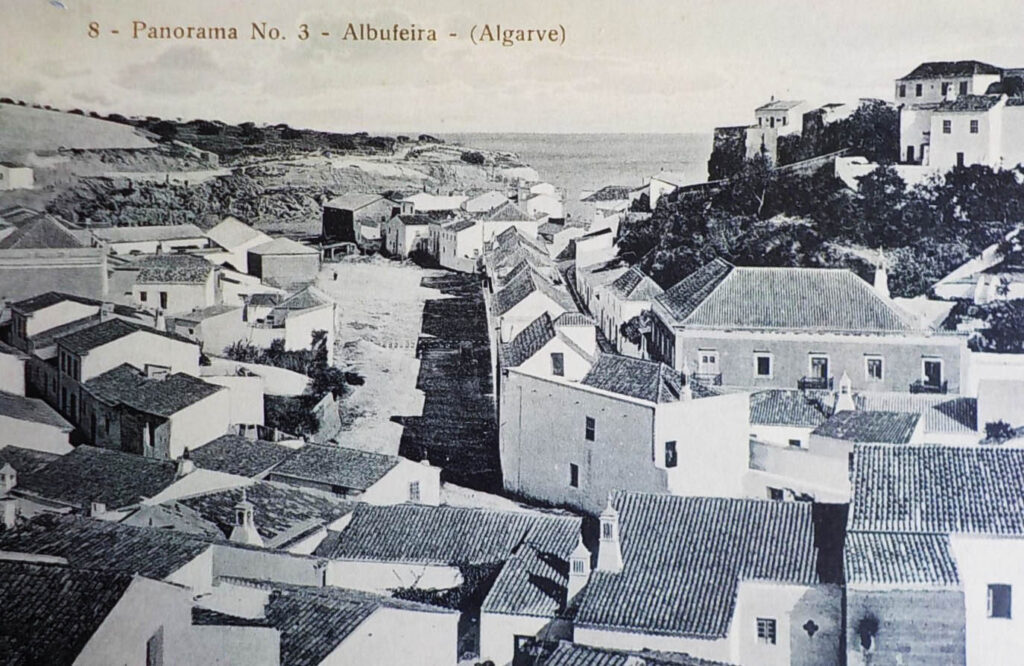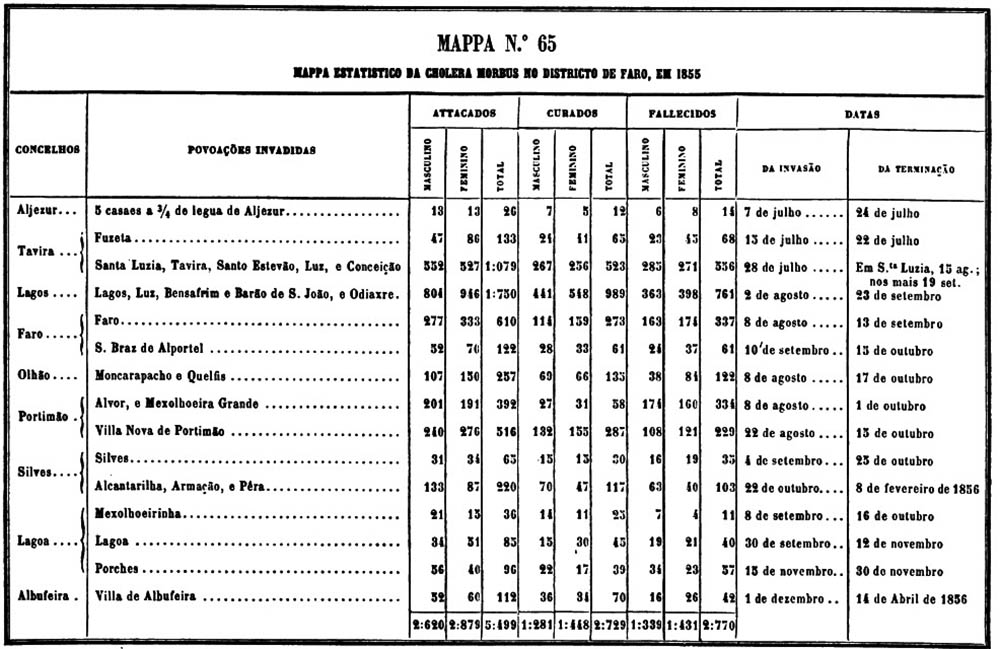«The kingdom of the Algarve seems to be helpless from heavenly mercy!» (Newspaper «Press and Law», January 20, 1856)
We continue to tour the Algarve and the catastrophes that befell the Algarve in the terrible year of 1855-56.
Thus, in the municipality of Lagoa, the scourge of cholera manifested itself in the mussel, on the 8th of September. With 100 fires, the inhabitants were supplied in the «poço d' Estombar».
The houses «are almost all of empty tile, and with poor hygienic conditions». In terms of occupation, the "traffic of navigation on the river" prevailed.
Intermittent fevers were considered endemic diseases. In 1833 he had been unharmed by the outbreak of cholera. The epidemic was felt there until October 16, with 36 patients, 11 dying.
In his fight, António Carvalho Ribeiro Viana, one of the clinicians sent from Lisbon by the government, stood out.
At the county seat, Lagoa, the martyrdom arrived on September 30, although much earlier, in the countryside, if some cases had been diagnosed.
With 1 dwellings, the parish housed 381 inhabitants, who were dedicated to agricultural work.
Without ponds, there were at some distance from the village «many carob trees, almond trees, fig trees, olive trees, sowing lands, and vineyards».
The people of Lagos consumed water from wells, of good quality and sufficient in quantity.
However, the village had two positive exceptions in the regional context, the dwellings were «generally well built, airy, with accommodation and cleanliness» and as for clothing «the inhabitants, even the poor, are dressed in warm clothing».
Intermittent fevers were endemic diseases, and cholera in 1833 had also "damaged" there.
The disease progressed slowly, with few daily infections, ending on 12 November. The number of people infected was 85, including those treated at the hospital itself (they were not discriminated), whereas the deaths were 40 people.
The treatment applied was similar to other locations, with the surgeon António Carvalho Viana also assisting here, as well as José Casimiro Fonseca Almeida.

Still in the county, Porches suffered the epidemic "with excessive violence" between the 15th and 30th of November.
The parish, with 164 dwellings and 763 inhabitants, had in its surroundings «sowing lands and vineyards, but very little trees». Agriculture was the main activity of the people of Porch.
There were no ponds, the wells being the main source of water. The houses were “small, without accommodations, nor acceptance”, while the inhabitants “are poorly fed and dressed”. With 96 infected, 57 individuals died.
The last population affected in the Algarve was Albufeira, on the 1st of December. The parish had 909 dwellings and 3 inhabitants, who were dedicated to «agricultural, artistic, and fishing».
Fig trees, almond trees, olive trees, vineyards and sowing lands abounded there. The water supply came from wells. "Houses are generally small and not very clean".
Cholera progressed slowly, with the exception of December 24-29, 1855 and February 5-8, 1856. On April 14, it was considered extinct.
The total number of affected was 112, of which 42 lost their lives (mostly poor). The doctor António José da Silva Carvalho provided support to the patients. At the same time, a measles outbreak arose in the village.
Between July 7, 1855 and April 14, 1856, they contracted the disease in the district of Faroat least 5 people (499 males and 2 females), of whom 620 died (1 males and 879 females).
The mortality rate among those infected was around 50%. The highest rate of infection occurred in the city of Lagos (20% of the population), while mortality peaked in the parishes of Alvor and Mexilhoeira Grande, where, in less than two months, 11% of the population lost their lives (until the absence of a doctor would be extraneous).
In the national context, the outbreak claimed about 18 victims, with the Algarve being the region most affected by the lack of resources and doctors.
The Lisbon newspaper «Imprensa e Ley», dated January 20, 1856, reported: «the cholera made there [Algarve] a death like nowhere else it escaped. Entire villages and houses were left empty. Desolation and mourning overwhelmed entire families.”
It should be noted that the Report only counted epidemic outbreaks, all scattered cases were not listed as they did not allow comparisons (in July 1856 there are still some cases in Vila Real de Santo António).
At the session of the Chamber of Deputies, on March 3, 1856, the number of deaths in the region was put at more than 6. We believe that the figure was not so high, but only a detailed analysis of the parish registers will be able to verify the accuracy. .
The victims, old, young, pregnant and children, belonged mostly to the most humble strata of society: «poor, and among them the fishermen, and working life», usually poorly fed and with poor hygiene practices.
The line between life and death was very thin. With cramped cemeteries, the suffering, fear and horror that those people endured in such a short period of time is unimaginable.
It was not until 1883 that Robert Koch identified the bacterium Vibrio cholorae, responsible for the disease. With the adoption of basic sanitation measures, cholera outbreaks in the world have been substantially reduced.
In Portugal, the last one appeared in 1974 and precisely in the Algarve, in Tavira, extending to Lisbon and Porto. But times were now happily different.
However, in Europe and Portugal in the mid-1852th century, comparisons were made and justifications were sought. Between 1860 and XNUMX the disease claimed more than one million deaths in Europe.
The Report is, therefore, a precious document, despite the horrible context in which it was written, and the bias it presents, always praising the measures taken and the powers instituted.
In it we obtain varied knowledge, true gems of another Algarve, with a very poor coast, with colossal social inequalities, without forgetting the population and main occupations, the characteristics of housing, endemic diseases, eating habits, dominant vegetation, etc. In short, a region where misery was the rule, where people did not live, but instead tried to survive (a reality applicable to the entire country).
Although Lagoa stood out for the positive, it was the exception in the regional context.
However, the cholera epidemic of 1855-56 was only one of the calamities that befell our ancestors in that horrible year. In January, an earthquake shook the region and…
(Go on)
Author Aurélio Nuno Cabrita is an environmental engineer and researcher of local and regional history, as well as a regular collaborator of the Sul Informação.
Note: In the transcripts, the spelling of the time was preserved. The images correspond to illustrated postcards from the first half of the XNUMXth century, with the exception of the table, inserted in the Report.
Click here to read the first article in this series
Click here to read the second article in this series






















Comments